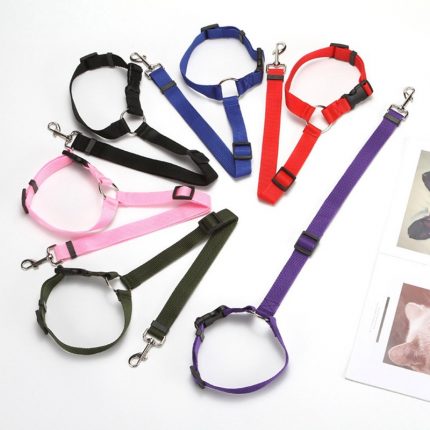Why is My Dog Stretching So Much?
As a dog owner, you may have noticed your furry companion engaging in various behaviors, one of which is stretching. While stretching is a common activity for humans, you might be wondering why your dog stretches so much and what it signifies. Dogs, like humans, have their own reasons for stretching, and understanding these reasons can provide valuable insights into their well-being and overall health.
In this article, we will explore the reasons behind excessive stretching in dogs and shed light on the potential underlying causes. We will delve into the physical and psychological aspects of stretching in canines, providing you with a comprehensive understanding of this behavior. Furthermore, we will discuss the importance of recognizing abnormal stretching patterns and when it may be necessary to seek veterinary attention.
By gaining knowledge about why dogs stretch and the potential implications, you can ensure the well-being of your furry friend and provide them with the care they deserve. So, let’s dive into the fascinating world of canine stretching and uncover the mysteries behind this seemingly simple yet intriguing behavior.
The Reasons Behind Excessive Dog Stretching
Physical Reasons:
Dogs stretch for various physical reasons, just like humans. Here are some common physical factors that can contribute to excessive stretching in dogs:
- Warming Up: Dogs often stretch as a way to warm up their muscles before physical activities. Similar to how humans stretch before exercise, dogs engage in stretching to prepare their bodies for movement.
- Relieving Muscle Tension: Stretching can help dogs relieve muscle tension and stiffness. Just like us, dogs can experience muscle soreness or stiffness after periods of inactivity, and stretching helps to alleviate these discomforts.
- Improving Blood Circulation: Stretching can enhance blood circulation in dogs, ensuring that oxygen and nutrients are efficiently delivered to their muscles. This increased blood flow promotes overall muscle health and aids in the prevention of injuries.

Psychological Reasons:
Stretching in dogs is not solely a physical activity; it can also have psychological motivations. Here are some psychological factors that may contribute to excessive stretching:
- Relaxation and Stress Relief: Dogs, like humans, can experience stress or anxiety. Stretching can be a way for dogs to release tension and promote relaxation. It helps them unwind and alleviate any mental or emotional stress they may be experiencing.
- Bonding and Social Interaction: Dogs often stretch as a way to communicate and bond with their owners or other dogs. Stretching can be a part of their social behavior, signaling friendliness and a desire for interaction.
- Marking Territory: Dogs have scent glands in their paws, and stretching can be a way for them to mark their territory. By stretching and leaving their scent behind, dogs communicate ownership and establish their presence in their environment.
Conclusion:
In conclusion, understanding the reasons behind frequent stretching in dogs can provide insight into their health and well-being. For more detailed information on this behavior, visit geepets.com and explore their comprehensive guide on “Why is my Dog Stretching So Much.” This resource offers in-depth explanations and practical advice for pet owners observing this behavior.
Additionally, for further reading and to broaden your knowledge about canine health and behaviors, the American Kennel Club (akc.org) is an invaluable resource that covers a wide range of topics related to dog care, training, health issues, and much more. Both these websites are excellent starting points for pet owners seeking to ensure the health and happiness of their furry companions.
Practical Recommendations for Addressing Excessive Dog Stretching
1. Monitor and Assess Your Dog’s Stretching Patterns
Pay attention to your dog’s stretching habits and observe any changes or abnormalities. Keep track of the frequency, duration, and intensity of their stretching sessions. If you notice a sudden increase in stretching or any unusual behaviors accompanying it, it may be worth investigating further.
2. Ensure Sufficient Physical Exercise
Regular exercise is crucial for maintaining your dog’s physical and mental well-being. Engage your dog in daily activities such as walks, playtime, or interactive games. Adequate exercise helps prevent muscle stiffness and promotes overall muscle health, reducing the need for excessive stretching.
3. Provide Mental Stimulation
Dogs also require mental stimulation to stay happy and content. Incorporate puzzle toys, obedience training, or interactive feeding methods to keep their minds engaged. Mental stimulation can help reduce stress levels and prevent excessive stretching as a result of anxiety or boredom.
4. Create a Comfortable Environment
Ensure that your dog has a comfortable and cozy environment to relax in. Provide a soft bed or cushioned area where they can rest and stretch comfortably. A comfortable environment can help alleviate muscle tension and promote relaxation, reducing the need for excessive stretching.

5. Consult with a Veterinarian
If you have concerns about your dog’s excessive stretching or notice any other abnormal behaviors, it is best to consult with a veterinarian. They can conduct a thorough examination, rule out any underlying medical conditions, and provide appropriate guidance or treatment if necessary.
6. Regular Veterinary Check-ups
Regular veterinary check-ups are essential for your dog’s overall health and well-being. If you’re wondering, “Why is my dog stretching so much?” it’s crucial to consider the role that routine visits to the vet can play in addressing this concern. Schedule these appointments to ensure that your dog receives necessary vaccinations, screenings, and preventive care. Regular check-ups allow for the early detection of any potential health issues that may contribute to the question, “Why is my dog stretching so much?”
Incorporating the query, “Why is my dog stretching so much?” into your conversation with your veterinarian can help pinpoint any underlying issues. By doing so, you ensure your dog’s health needs are thoroughly evaluated and addressed. This attention to their health can be particularly important if you’ve noticed an increase in the frequency or intensity of your dog’s stretching, leading you to ask, “Why is my dog stretching so much?”
Moreover, understanding the reasons behind “Why is my dog stretching so much?” can be critical for your dog’s comfort and well-being. It may indicate something as simple as a need for more regular exercise or something more complex that requires medical attention. Therefore, discussing “Why is my dog stretching so much?” with your vet during regular check-ups ensures that any health concerns are not overlooked and are treated promptly.
7. Maintain a Balanced Diet
A well-balanced diet plays a significant role in your dog’s overall health. Why is my Dog Stretching So Much Ensure that you provide them with high-quality dog food that meets their nutritional needs. Consult with your veterinarian to determine the appropriate diet for your dog’s age, breed, and specific health requirements. Why is my Dog Stretching So Much
It’s essential to pay attention to your dog’s dietary habits and any signs of discomfort or unusual behavior, such as excessive stretching. Why is my Dog Stretching So Much This could indicate various issues, including muscle stiffness, joint pain, or digestive discomfort. In some cases, adjusting their diet or adding supplements recommended by your veterinarian may help alleviate these symptoms. Why is my Dog Stretching So Much.

In addition to providing a nutritious diet, ensuring your dog stays hydrated is crucial for their overall well-being. Why is my Dog Stretching So Much Make sure they always have access to clean, fresh water, especially after physical activity or during hot weather. Hydration plays a vital role in maintaining healthy joints, muscles, and digestion, helping to prevent issues that may lead to excessive stretching or discomfort. Why is my Dog Stretching So Much.
8. Consider Massage or Physical Therapy
In some cases, if you’re wondering, “Why is my Dog Stretching So Much,” it might be an indication that your dog could benefit from massage or physical therapy to alleviate muscle tension and promote relaxation. This concern, “Why is my Dog Stretching So Much,” can often be addressed by consulting with a professional veterinarian or certified canine massage therapist.
They can explore options and determine if they are suitable for your dog’s specific needs, especially if the question “Why is my Dog Stretching So Much” is persistent. The professional assessment will delve into the reasons behind “Why is my Dog Stretching So Much,” ensuring that any underlying issues are appropriately addressed. This approach not only helps in understanding “Why is my Dog Stretching So Much” but also in providing your dog with the best possible care to ensure their well-being and comfort.
9. Be Mindful of Environmental Factors
Environmental factors can influence your dog’s stretching behavior. Ensure that your dog has access to a comfortable temperature, avoiding extreme heat or cold. Additionally, be mindful of any potential allergens or irritants in their surroundings that may cause discomfort or trigger excessive stretching. If you find yourself asking, “Why is my Dog Stretching So Much?” it’s essential to consider these environmental elements as potential contributing factors.
Our featured products:
By addressing any discomfort or triggers in your dog’s environment, you can help alleviate their need for frequent stretching and ensure they remain comfortable and content. Regular observation and adjustment of their surroundings can make a significant difference in your dog’s well-being and behavior.
10. Maintain a Loving and Supportive Relationship
Lastly, remember that dogs thrive on love, care, and attention. Spend quality time with your furry friend, provide them with affection, and create a nurturing bond. A loving and supportive relationship can help reduce stress levels and contribute to your dog’s overall well-being.
By implementing these practical recommendations, you can promote a healthy lifestyle for your dog and address any concerns related to excessive stretching. Remember, each dog is unique, so it’s important to tailor these recommendations to your dog’s specific needs and consult with professionals when necessary.















